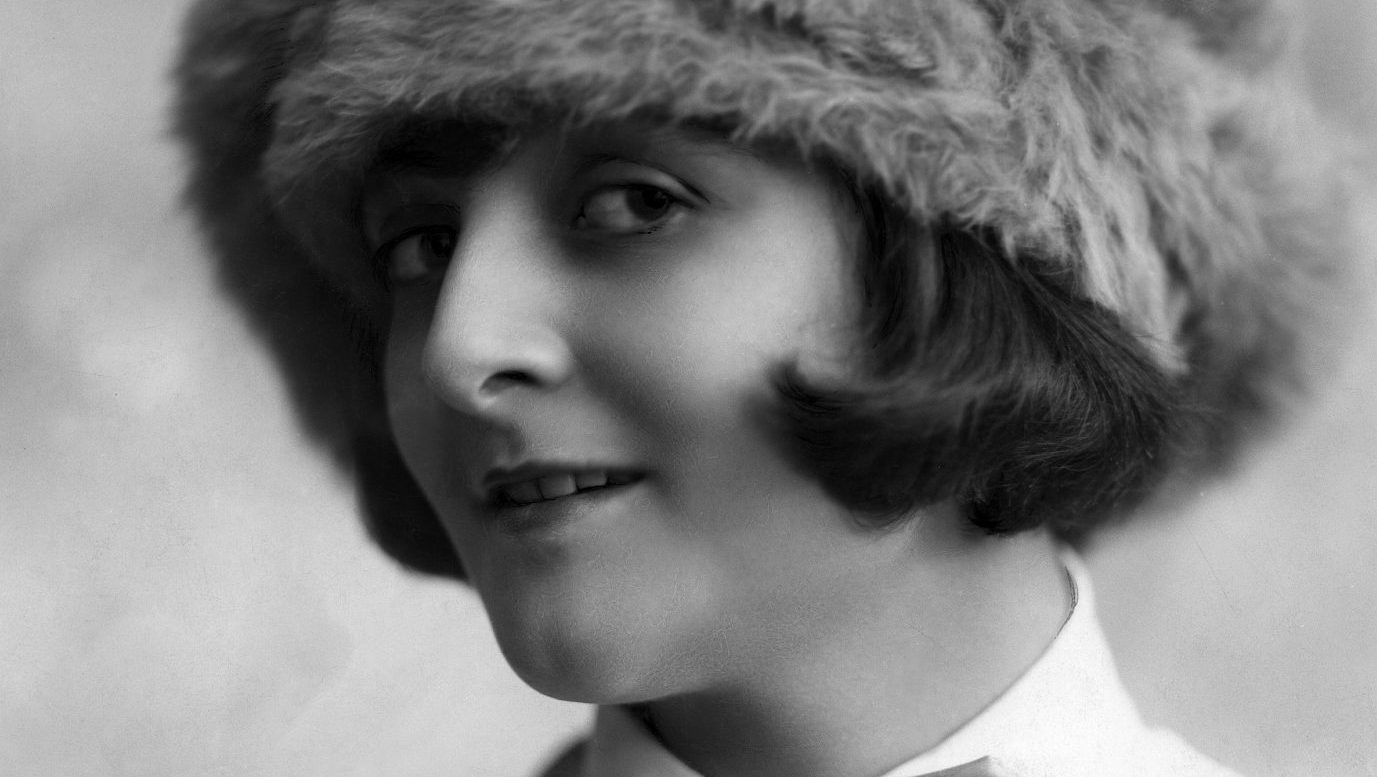One of Lya de Putti’s most convincing performances was one she never gave, in a grave she never occupied.
A headstrong girl born into considerable privilege to a cavalry officer in the Austro-Hungarian army and a Hungarian baroness, her parents decided that the best way to thwart their daughter’s rejection of the life of a provincial aristocrat in favour of the stage was to marry her off as quickly as possible.
At 16 de Putti was forced to marry Zoltán de Szepessy, 10 years her senior and the local magistrate in Vécse, now in eastern Slovakia. Two daughters soon followed, but by 1918 de Putti could take no more of the stifling world of minor rural nobility and left her family to pursue her dream of becoming an actor and dancer.
For all the original motives for their marriage, de Putti’s departure left Szepessy heartbroken. So heartbroken he made a grave for her in the family plot, installing a headstone that read “Here lies Mme Zoltán de Szepessy, born Lya de Putti, who died at the age of 22”. The girls, convinced by their father their mother was dead, prayed daily at an empty grave.
Strange as it seems, her young daughters grieving before a grave she didn’t occupy was not the worst misfortune to afflict the short, dramatic and tragic life of Lya de Putti.
When she left Vécse she headed for Budapest, where she established herself as a singer and dancer on the cabaret circuit. The postwar turmoil that engulfed Hungary prompted a move to Bucharest, where she studied ballet, before moving on to Berlin in 1920, just as the city was cranking up its bohemian Weimar credentials.
There she married a Norwegian merchant who died of tuberculosis within months, but in Berlin she began to realise her genuine potential as a performer. She danced and sang in clubs and established herself as a ballerina, rising to become premiere danseuse at the Wintergarten in 1924.
By then, however, she had begun to appear in films, the medium in which she would really make her name.
When she starred opposite Emil Jannings in Ewald André Dupont’s 1925 classic melodrama Varieté, de Putti seemed to be on the brink of global fame. She played an erotic dancer who became a love interest for Jannings’ trapeze artist forced to give up performing after an accident and reduced to running a fleapit circus.
De Putti flourished as Bertha-Marie, giving arguably the performance of her career. The role played to all her strengths, and the tragedy of Lya de Putti lies in how that situation was never repeated.
Ufa, Germany’s biggest film studio, was keen to sign her on a long contract, but Varieté had won plaudits in the US despite being heavily censored. When Paramount Pictures made enquiries, de Putti was Hollywood-bound.
Her first film in the US was DW Griffith’s 1926 The Sorrows of Satan in which she played a vampish Russian noblewoman. While the New York Times wrote that “Lya de Putti depicts the siren with a sinuous ease,” the film flopped and de Putti soon realised she had been brought over purely to play two-dimensional scheming vamps.
Frustrated by typecasting, she returned to Europe, but with the coming of sound de Putti’s heavy Hungarian accent became an issue even there. In 1929 she was in London playing the lead in an IRA drama called The Informer, a role she relished, but her accent was deemed impenetrable enough for another actress to be brought in to dub her lines.
With her screen career in effect at an end, de Putti returned to the US in 1930, determined to revive her stage career, and when she was announced as the lead in a bawdy Broadway farce called Made in France there was considerable media excitement. Her Hollywood career may not have flourished, but her reputation as an actor was still largely intact: the films had been the issue, not her performances.
When Made in France opened in November 1930, however, it was roundly panned. “There is no excuse for a farce so consistently inferior ever reaching the stage,” wrote one appalled reviewer. “The best thing to do is try and forget that it ever happened.”
Yet the critics still saw enough in de Putti’s performance to distance her from the awfulness of the material.
“The transfer from the Klieg lights of the movies to the footlights of the stage reveals the star as a charming comedienne as well as a capable dramatic actress,” said the Brooklyn Eagle.
Such talents were not enough to salvage the production, however, and as the audience took their seats for the fifth night a cast member appeared in front of the curtain and announced that the show was cancelled due to an illness suffered by de Putti. Made in France was never performed again.
Decamping to Palm Beach, de Putti described the play as “terrible”, but stressed that she was keen to return to the stage as she relished “the personal contact between actor and audience. A camera and microphone do not stimulate an actor like an audience”. Hollywood, she said, she found “deadening”.
Alongside career frustrations, meanwhile, her personal life was a mess. Relationships came and went among rumours of suicide attempts, first in 1926 when she plunged from a window at her Berlin residence, breaking an arm and a foot.
De Putti said she had merely overbalanced waving goodbye to friends, but a year later, also in Berlin, she suffered serious lacerations after crashing through a plate-glass window, according to rumour a deliberate act following a quarrel with a lover.
When she survived a plane crash uninjured during the summer of 1931 it seemed that maybe fortune was turning Lya de Putti’s way at last. In November of that year, however, she was rushed to hospital with a chicken bone stuck in her throat. The bone was removed successfully but, delirious from the operation, de Putti climbed out of bed and was found wandering the hospital corridors, something medics later blamed for her contracting first pleurisy, then the pneumonia that killed her.
Even in death, misfortune and tragedy pursued her. There were rumours, never confirmed, that the chicken bone story was cover for another suicide attempt. When her wishes to be buried in the US were unsuccessfully contested by her family, they refused to travel to her funeral, which was attended by just 14 people.
But then, after all, there was already a grave in Hungary with her name carved in stone, by which her daughters commenced mourning the second death of their mother.




